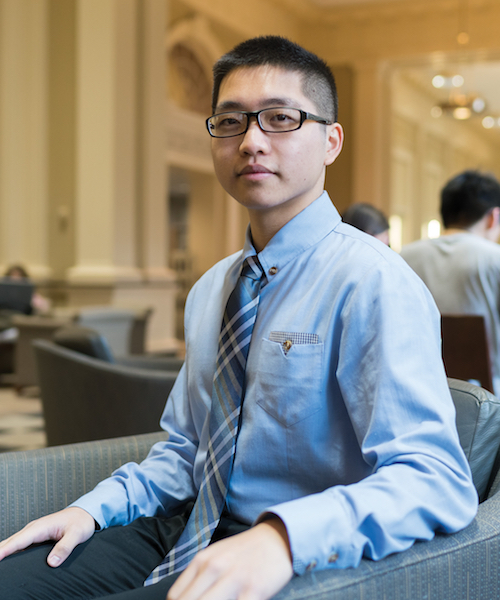
Infrastructure Cooperation: A New Wind to push China and the United States Together
Chang Fan | 2019年1月1日
响应: 中美合作与竞争
Andrea Su
注:中英文网站上发表的学生日志均为英文。
When speaking about U.S.-China relations, we often reason from a high-level, state-centric point of view. According to classical international relations theory, the rise of an increasingly powerful China can only be seen as a challenge to the existing system of American hegemony. In light of the trade war and tensions in the South China Sea, Georgetown SFS faculty experts recently suggested that an atmosphere of competition has become the new normal in U.S.-China relations. However, a vision of cooperation rather than competition is necessary for a future in which China and the United States can work together on the most pressing global issues. The good news is that this vision is easily accessible, given a change of perspective from that of the state to that of the common people. From the perspectives of both Chinese and American millennials, it is clear that the relationship between Chinese and American people contains more room for cooperation than ever before.
Compared to previous generations, young Chinese and Americans have greater cultural exposure and more favorable attitudes toward each other. According to a recent survey conducted by Pew Research Center, 49% of American 18- to 29-year-olds have a favorable view of China, compared with only 37% of those ages 30 to 49. Experts interpret this as part of a larger global trend in which younger people feel less anxious about international competition and more positive toward foreign powers. The same can be said for young Chinese adults, who have grown up with far more exposure to American culture than their parents’ generation. In recent years, educational exchanges have proliferated between the two countries, with mainland Chinese now accounting for 1 out of 3 foreign students in the United States and joint programs in China becoming the norm for top U.S. universities. Many Chinese millennials are well travelled and well exposed to international culture, allowing them to hold a positive view of the United States, while maintaining their own distinctive beliefs.
In addition to cultural awareness, another driver of cooperation is the amount of communication made possible by digital technology and social media. Technology can be a powerful tool to bridge the gap between Chinese and Americans, due to its widespread usage and unprecedented ability to amplify public opinion. Discussion of technology in China often hones in on the censorship that limits access to Western media and prohibits the spread of information. Americans are shocked by the reality that China’s web users are blocked from using Google, Facebook, Twitter, and Instagram, and researchers have expressed concern over Chinese students’ indifference towards accessing uncensored, politically sensitive information. However, ending the conversation here shrouds the bigger picture in which Chinese millennials are engaging with social and new media in ways not so different from their American counterparts. Though the platforms are domestic, Baidu, WeChat, and Weibo are similarly employed by Chinese youth to express their opinions on a range of social issues, with a reach and immediacy unmatched before the age of social media.
Social media is a 21st century experience shared intimately by both Chinese and Americans. It has proven to be a formidable tool to amplify the people’s voice, hold powerful institutions accountable, and drive change. From the recent Dolce & Gabbana scandal that forced the global luxury brand to cancel its runway show and suffer a boycott in the Chinese market, to a group of young Communist graduates protesting in August for greater worker protections in Huizhou, social media is being used to voice the concerns of young people in China as it is in the US. New content technologies such as the viral video app, Douyin, have become so popular in China that more than 500 government agencies have begun posting videos on the app to ensure that the public hears the official voice.
Young people on social media focus less on international competition and more on progress, in areas such as innovation, education, and humanitarianism. Collaborations regarding technology and youth are particularly common, such as the U.S.-China Youth Forum on Entrepreneurship and Innovation sponsored by the State Department and the 2017 China-U.S. Young Maker Summit hosted by New York University. As young people increasingly cross physical and digital boundaries to live, study, and work with one another, the cultural rapport built between two peoples will serve as a stronger buffer against any fearmongering or hawkish rhetoric of the future. Of course, Georgetown’s U.S.-China Student Fellows program itself is a great example of building cultural and relational ties between Chinese and American youth and investing in a more collaborative future.

Chang Fan | 2019年1月1日

Danny Li | 2019年1月1日

Jozanne Murphy | 2019年1月1日

Junming Cui | 2019年1月1日

Lakshmi Iyengar | 2019年1月1日

Xiaogu Xu | 2019年1月1日

Aaron Baum | 2018年12月31日

Isabelle Hupez | 2018年12月31日

Ivan Solomon | 2018年12月31日

Yihong Shi | 2018年12月31日

Zhaoqing Li | 2018年12月31日